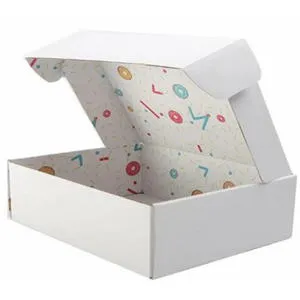Cardboard boxes, often overlooked in our daily lives, play a crucial role in various industries and our day-to-day activities. From packaging and shipping to storage and organization, these humble boxes offer versatility, durability, and convenience. In this article, we will explore the importance of cardboard boxes, their various uses, and the sustainability aspects associated with them.

The Origins and Composition of Cardboard Boxes
Cardboard boxes have been in use for centuries, with their origins traced back to ancient Egypt. Initially, they were made from wood, but over time, the use of paper-based materials became more prevalent. Today, most cardboard boxes are made from corrugated cardboard, which consists of three layers: an inner liner, an outer liner, and a fluted layer in between. This structure provides strength and rigidity to the boxes while keeping them lightweight.
Packaging and Shipping
One of the primary uses of cardboard boxes is in packaging and shipping. They are widely used by businesses to protect and transport goods of various sizes and shapes. Cardboard boxes come in a range of sizes, allowing for customization based on the specific requirements of the items being shipped. They provide a protective layer, preventing damage during handling and transportation. Moreover, cardboard boxes can be easily sealed and labeled, making them ideal for efficient logistics management.
Storage and Organization
Cardboard boxes are also invaluable when it comes to storage and organization. They provide a cost-effective solution for keeping belongings safe and organized. Whether it's in our homes, offices, or warehouses, cardboard boxes offer a convenient way to categorize and store items. They can be easily stacked, maximizing the use of available space. Additionally, cardboard boxes can be labeled, making it easier to locate specific items when needed.
Recycling and Sustainability
One of the most significant advantages of cardboard boxes is their recyclability and sustainability. Cardboard is a renewable resource, as it is primarily made from recycled paper and wood pulp. After use, cardboard boxes can be recycled and turned into new boxes or other paper products. Recycling cardboard helps reduce the demand for fresh raw materials, conserves energy, and minimizes waste sent to landfills.
Furthermore, the lightweight nature of cardboard boxes contributes to reduced transportation costs and carbon emissions. Compared to alternative packaging materials, such as plastic or metal, cardboard boxes are more environmentally friendly. They can be easily flattened and transported back to recycling facilities, further reducing the environmental impact.
Creative Reuse and DIY Projects
Apart from their practical uses, cardboard boxes also offer opportunities for creative reuse and do-it-yourself (DIY) projects. With a little imagination, cardboard boxes can be transformed into various useful items, such as storage bins, organizers, playhouses for children, or even artistic sculptures. These DIY projects not only promote creativity but also encourage the reuse of materials, reducing waste and fostering sustainability.

In conclusion, cardboard boxes are versatile, durable, and essential in our daily lives. They serve as reliable packaging and shipping solutions, enable efficient storage and organization, and contribute to sustainability through recycling. Their lightweight nature and recyclability make them an environmentally friendly choice. So, the next time you receive a cardboard box, remember its importance and consider the various ways it can be reused or recycled.